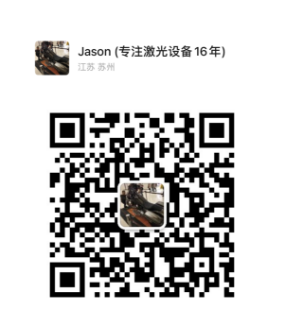1. Plastic materials
● Commonly used plastics
PET (polyethylene terephthalate): widely used in bottles and containers, UV laser marking can form clear marks on its surface, suitable for the food and beverage industry.
PP (polypropylene): commonly used in electronic products and packaging materials, UV laser marking can form high-contrast marks on the PP surface, and it is not easy to wear.
PVC (polyvinyl chloride): commonly used for pipe and cable protection, UV laser marking has good adhesion and durability on PVC, suitable for various outdoor applications.
● Effect of UV laser marking on plastic surface
Marking effect: UV laser can make white, dark or transparent marks on the plastic surface, with clear marks and high contrast. The low heat impact during the marking process reduces the risk of material damage and maintains the integrity of the material.
Durability: UV marking has good chemical resistance and wear resistance, especially suitable for various plastic products used in daily life, such as cosmetic packaging and medical containers.

2. Metal materials
● UV laser marking effect on coated metals
Aluminum and stainless steel surface coatings: UV lasers can accurately remove the coating on the metal surface, exposing the metal substrate underneath, thereby achieving high visual contrast marking. Especially on aluminum, the marking effect is remarkable, providing clear and durable marking.
Diversified marking: For different coated materials, UV laser marking can produce different effects, including black and white contrast, color changes, etc., and has strong adaptability.
● Impact and control on metal substrates during marking
Due to its highly concentrated beam energy and low thermal impact, UV laser marking can effectively control the impact on metal substrates. Compared with traditional lasers, UV lasers greatly reduce the penetration of heat into metals, avoiding the problem of thermal deformation or burning of substrates.
By adjusting laser parameters (such as power, frequency and marking speed), the marking effect of metal substrates can be further finely controlled to ensure the beauty and durability of the mark.

3. Non-metallic materials
● Applicable non-metallic materials
Glass: UV lasers can accurately mark without damaging the glass surface, suitable for wine bottles, cosmetic bottles, etc., to ensure clear and visible markings.
Wood: Clear patterns and text can be produced on the surface of wood. The environmental protection characteristics of UV laser marking make it an important application in custom furniture and crafts.
Ceramics: Ceramic surfaces usually require high temperature and hardness. UV laser marking can solidify a lasting pattern on its surface, which is suitable for bathroom and home appliances.
● Advantages and performance of UV laser marking on these materials
High precision and fineness: UV laser marking can achieve high-resolution and fine marking on the surface of non-metallic materials, which is suitable for works of art and brand promotion materials.
Durability: Excellent marking of non-metallic materials, because UV laser marking usually does not cause structural damage to the material, and the marked surface has good wear resistance and corrosion resistance.
Environmental protection: The UV laser marking process does not volatilize chemicals, meets environmental protection standards, and is particularly suitable for products such as food and cosmetics that require strict compliance with hygiene regulations.

The wide applicability and excellent performance of UV laser marking machines in various materials (plastics, metals, non-metals) make it an important technology in modern industrial identification and brand promotion. Its high precision and low thermal impact characteristics further broaden the application scope of laser marking and meet the needs of different industries. Click here for more information


























